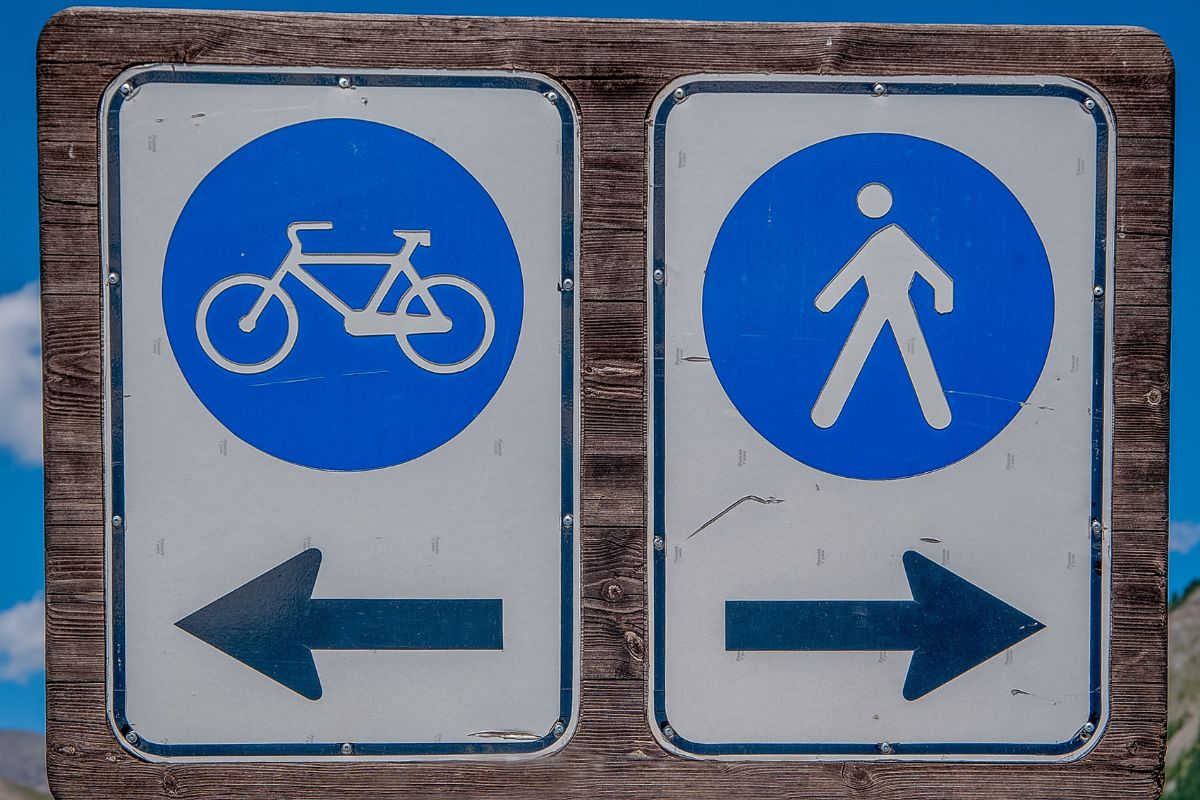Creating effective signage is vital for conveying information, guiding visitors, promoting products, or reinforcing a brand. As the first point of visual communication for your business or event, a sign’s design and placement can substantially influence the audience’s interaction with your message. By understanding some essential design principles and employing the right tools, you can create signs that are not only visually appealing but also communicate your message efficiently.
Engaging signage combines purposeful design with clear messaging to guide and inform. Whether it’s a promotional banner, an instructional placard, or a regulatory sign, the key lies in making your signage readable and impactful. Attention to details such as color contrasts, font sizes, and material quality ensures that your sign is noticed and understood by your intended audience. With the right approach, you can make your own signs that effectively reflect your brand’s identity and communicate your key messages.
Understanding Signage Basics
In tackling the essentials of sign creation, you’ll need to appreciate the core functions of signage and explore the various types found in the industry.
The Purpose of Signage
Your signage acts as a silent salesperson, a visual communicator that conveys your brand’s message, facilitates customer navigation, or issues a call to action. Whether highlighting promotions or reinforcing brand identity, the fundamental goal is to capture and sustain audience interest, providing them with necessary information in a compelling way.
Types of Signage
Signage is diverse, ranging from indoor to outdoor applications, each with distinct characteristics. Common types include:
- Outdoor Signs: These are crucial for attracting attention to your physical location. Examples are billboards, storefront signs, and street banners.
- Indoor Signs: Located within a business venue, they help with navigation, inform about specific offers, and enhance the customer’s overall experience. They range from menu boards to safety signs.
- Digital Signs: Incorporating technology, they offer dynamic content updates and can be interactive, such as digital kiosks or LED boards.
Understanding these basics arms you with the foundation to create effective signage that resonates with your intended audience.
Design Principles for Signage

Effective signage is not just about what you say, but how you say it. Your sign’s design will greatly influence its visibility and effectiveness.
Choosing Fonts and Colors
When selecting fonts for your signage, ensure that they are legible from a distance. Sans-serif fonts like Helvetica or Arial are often more legible, especially for signs that are meant to be read quickly or from afar. The size of the font, too, plays a crucial role—you want your text to be large enough to be easily read.
For colors, contrast is key. Opt for color combinations that stand out but also maintain clarity. Black text on a white background or white text on a dark background are classic examples that ensure high visibility. Refer to principles outlined by professionals for ensuring your signage is readable and appealing.
Incorporating Logos and Branding
Your logo should be prominently featured but should not overpower the message. It’s important to ensure that your branding is consistent across all signs. Use the colors and font styles that are associated with your brand to reinforce brand recognition. For integrating logos effectively and ensuring consistency with your brand visuals, it may be beneficial to consult a professional sign designer.
Ensuring Readability
Readability goes beyond font choice; it encompasses the spacing, sizing, and amount of text. You’ll need to make sure there’s enough spacing between letters and lines, known as tracking and leading, respectively. Keep your message concise to allow for larger type, as more text means smaller letters, which can become difficult to read from a distance. Find insights on creating signs that are easy to understand and navigate here.
Remember, the most effective signage conveys its message quickly and without confusion. Use these design principles to guide your choices and create signage that serves its purpose efficiently.
Planning Your Signage

Effective signage is a critical component of any business’s visual communication strategy. It requires careful planning to ensure that signs are placed where they’ll have the maximum impact and are compliant with local laws.
Determining Sign Locations
Your signage should be where it’s most visible to your target audience. Start by identifying key areas with the highest foot traffic or visibility to passing vehicles. Consider the sightlines in these areas and whether anything might obstruct the view of your sign.
Assessing Viewer Distance and Movement
The size and design of your signage will depend on how far away the viewer will be and their movement. For example, signs intended to be read by pedestrians can be smaller with more detailed information, whereas highway billboards require larger text and more straightforward messaging. Here’s a simple guideline:
- Pedestrians (walking speed): Use a font size that is readable from 6 feet away.
- Vehicle traffic (slow-moving): Your sign should be legible from at least 3 times the distance of the slowest moving vehicle.
- High-speed traffic: Increase text size considerably to ensure legibility from a distance.
Complying with Local Regulations
Before you install any signage, you need to understand and adhere to local zoning laws and regulations, which can vary widely depending on your location. Consult with a professional signage provider like Brady Signs to navigate the legal nuances. Obtain all necessary permits before proceeding to avoid any costly fines or required changes.
Creating the Signage Design

Creating an effective signage design involves a combination of using the right design tools, choosing quality materials, and finalizing a layout that communicates your message clearly and effectively.
Using Design Software
To start designing your sign, you’ll need to select a design software that suits your skill level and design needs. Programs like Canva offer user-friendly interfaces and a wide range of templates to help you create custom signage. Whether you’re adding text, incorporating logos, or selecting colors, these tools provide you with the flexibility to create professional-looking designs with ease.
Selecting Materials
Your choice of materials can impact the durability and appearance of your sign. For long-lasting outdoor signs, consider materials with a 10-year warranty or opt for professional-grade options mentioned in this custom sign shop. Indoor signs might benefit from lighter, more cost-effective materials.
Finalizing the Layout
The layout of your sign is crucial. It should be easily legible and visually appealing. Keep your message brief and bold to ensure that it is readable from a distance. High impact signage employs design principles that focus on visibility and legibility, as described in these effective signage tips. Remember to balance the text, images, and negative space to create an organized and effective sign.
Fabrication Processes

The process of creating custom signs involves various intricate steps ensuring the final product meets your expectations for durability and aesthetic appeal.
Printing Techniques
Your signage begins to take shape during the printing phase, where your chosen design is transferred to the sign material. State-of-the-art digital printers are typically used for their versatility in handling different materials and inks. Depending on your sign’s requirements, you might encounter methods like UV flatbed printing, which cures the ink instantly, making it durable and fade-resistant.
Cutting and Assembly
After printing, the materials are shaped into the final sign. Precision cutting tools, such as routers or lasers, are employed to cut the material accurately according to your sign’s specifications. The assembly phase then sees all components of your sign, which may include elements like lettering and logos, coming together. High-strength adhesives or secure fastenings ensure the sign is robust and the elements remain in place.
Quality Control Checks
Once your sign is assembled, it goes through a rigorous series of quality control checks. Detailed inspections are performed to ensure there are no defects. Your sign’s structural integrity, color fidelity, and overall craftsmanship are assessed against high standards. Only after passing this phase will your sign be cleared for final delivery and installation.
Installation of Signage

Proper installation is crucial for ensuring that signage is both visible and durable. You need the right tools and understanding of how to mount and secure your signs as well as a focus on safety.
Tools and Equipment Needed
- Measuring Tape: To determine the exact dimensions for sign placement.
- Level: To ensure your sign is perfectly horizontal or vertical.
- Drill and Drill Bits: For creating pilot holes in the mounting surface.
- Screwdriver or Power Driver: To secure screws, bolts, or other fasteners.
- Ladder or Lift: When installing signs at height.
- Protective Gear: Safety glasses and gloves are essential for protection.
Hardware: Depending on the sign material and mounting surface, you’ll require specific anchors, screws, and washers.
Mounting and Securing
- Identify Mounting Location: Use your measuring tape to find the ideal spot where the sign will have the most visibility.
- Prepare the Surface: Clean the area where the sign will be mounted to ensure tight adhesion.
- Mark Pilot Holes: Based on your sign’s bracket or mounting holes, mark where you will drill.
- Drill and Install Anchors: Carefully drill the pilot holes and insert anchors if necessary.
- Attach the Sign: Line up your sign and secure it with screws or bolts, making incremental adjustments to keep it level.
Safety Considerations
- Always check for cables or pipes in walls before drilling to avoid accidents.
- Secure ladders on even ground and have a spotter when working at height.
- Wear protective gear to prevent injury from falling objects or drilling mishaps.
Maintenance and Upkeep

Maintaining and upkeeping your signage is crucial to ensure it remains visually appealing and functional. It extends the life of your signs, reflects well on your brand, and ensures safety compliance.
Cleaning Methods
To clean your signage effectively, identify the materials your sign is made of and choose cleaning agents that will not damage it. For example, for signs made of metal or plastic, a solution of mild soap and warm water is generally safe. When cleaning, use a soft, lint-free cloth to avoid scratches. Avoid abrasive cleaners and tools which can cause damage.
Regular Inspection
Monthly inspections are imperative to catch issues early on. During an inspection:
- Check illumination: Ensure all lights are functioning.
- Look for wear and tear: Rust, mold, and discoloration can indicate that your sign needs attention.
- Assess physical integrity: Any loose fixtures or parts need to be addressed promptly to prevent further damage or potential safety hazards, as advised by sign maintenance experts.
Repair and Replacement Strategies
When it comes to repairs, taking immediate action when you spot minor issues can prevent more significant problems. If an element of your sign, like a lightbulb, starts to fail, replace it right away. For more complex issues or if you’re unsure about how to proceed, consider enlisting the help of a professional sign technician, especially for electrical components. When repairs become too frequent, evaluate if it’s more cost-effective to replace the sign entirely.
Evaluating Signage Effectiveness

In creating effective signage, you must assess how well your signs are performing. This involves a systematic approach to gather feedback, measure their visibility and impact, and make necessary adjustments based on thorough analysis.
Gathering Feedback
Solicit opinions from customers and passersby to gain insights into your signage. This feedback can reveal if your signs are communicative and engaging. Utilize surveys or interviews to collect precise feedback concerning the design, message clarity, and placement of your signage.
Measuring Visibility and Impact
Evaluate the visibility of your signs through both quantitative and qualitative data. Track metrics such as foot traffic, conversion rate, and dwell time in the vicinity of your signs. Additionally, qualitative assessments can be done by observing interactions and engagement levels with the signage.
- Foot Traffic: Count the number of people passing by your sign.
- Conversion Rate: Note the percentage of observers who take action.
- Dwell Time: Measure the length of time people spend looking at your sign.
Making Adjustments Based on Analysis
After collecting data, identify trends and patterns to inform necessary changes. For example, if foot traffic is low, consider a more prominent location. Enhance contrast or luminance for greater visibility if the sign is hard to read..RequestMethodical analysis will optimize your signage and ensure it meets its intended goals.
Frequently Asked Questions
Finding the right information about signage creation can streamline your process and enhance the end result. This section covers pivotal tools, resources, and steps for crafting effective business signs.
What are the best online tools for creating custom business signage?
For custom business signage, online tools like Adobe Spark offer a range of templates and design elements that cater specifically to business needs. They allow you to craft personalized signs that stand out, even without a design background.
Can I design professional signage using free design templates?
Yes, there are numerous websites offering free design templates that can help you create professional-looking signage. Websites like Vistaprint provide customizable templates adapted to various types of business signage.
Which apps are recommended for sign making and design on the go?
Apps such as Canva and PosterMyWall are highly recommended for sign making and design on the go. They have user-friendly mobile versions that make it easy to design anywhere, anytime.
How can I design a shop sign board using online resources?
To design a shop sign board using online resources, platforms like Signs.com offer specific tools for creating outdoor signs, allowing for custom size specifications and weather-resistant materials suited for shop frontages.
What steps are involved in creating effective and proper signage?
Creating effective signage involves strategic planning, starting with identifying the purpose and audience, ensuring good visibility and clarity, and adhering to legal standards such as the ADA requirements for accessible design.
Are platforms like Canva suitable for creating business signs?
Platforms like Canva are indeed suitable for creating business signs, offering a vast array of design templates and graphics that can be customized to fit your brand and messaging, even if you’re not experienced in graphic design.



